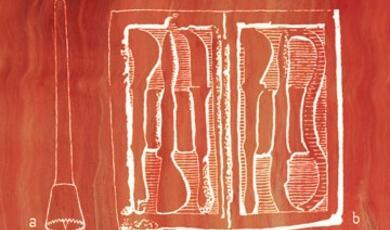HERA – Queen of the Electron Microscopes
Share
- Details
- Text
- Audio
- Downloads
- Extra Reading
Are quarks the ultimate seeds of matter or is there a deeper layer of the Cosmic Onion? If there is, HERA, the most powerful electron microscope in the world, may be the first to know.
Download Text
HERA:QUEEN OF THE ELECTRON MICROSCOPES
Professor Frank Close OBE
In last week's talk we saw Thomson's tube with which he discovered the electron in 1897. He did it by himself and we saw him and his colleagues at Cambridge (SLIDE OF SUITED MOUSTACHED GREY MEN). Compare with his modern analogues (SLIDE OF HERA COLLABORATION). Much has changed (there are no suits, some moustaches, several women and these are the members of a team working on a single experiment!) The frontiers of science have moved in many ways in a century. What are they doing; where are we going; where is the modern frontier?
The universe consists of matter whose basic particles are choreographed by the fundamental forces of Nature. We will review what we know about the latter in my next talk; today deals with the seeds of the matter that we find here on Earth.
Thomson had discovered the electron: a tiny negatively charged particle, the carrier of electric current. Common to all atoms this implied that there is negative electric charge within all of them. Now, every breath we take in a million million million million atoms: lots of negative charge. Yet we are unaware of this. The reason is that there is positive charge in every atom, which exactly balances and neutralizes the negative. How the electrical atom is structured was discovered by Rutherford.
He used radioactive bullets - alpha particles, which are positively charged pieces of atomic nuclei (we now know). All that Rutherford needed was to know they were relatively massive and positively charged. The idea was that if you fired alpha particles at atoms, then they would reveal what the inner electrical structure of an atom is like. (CARTOONS TO SHOW THE IDEA). The story of how his assistant, Marsden, noticed that occasionally the alphas were deflected violently, and the shock with which Rutherford realised its implications are too well know to repeat here (if you don't know it or want to read more, I suggest my book Lucifer's Legacy, Oxford University Press 2001). This suggested that the positive charges are localized in a massive centre to the atom and that the rare chance direct hits caused the violent deflections.
Rutherford's notebooks, still preserved in the Cambridge University library (even though he made his discovery of the nuclear atom in Manchester), reveal his genius for getting to the heart of the matter, both literally and metaphorically! He initially wondered about the rare cases where an alpha was stopped in its tracks and turned back through 180degrees. I include a copy of one of the pages, to show his writing and the one equation: it is simply the expression of conservation of energy as the alpha initially far away is in motion and then comes to a stop when at its closest approach to the nucleus, before being repelled by electrostatic forces from whence it came.
When far away it does not feel electrical repulsion and so its total energy is due to its motion: 1/2mv^2 is its kinetic energy; this is the left hand side of the equation. As it approaches the nucleus the positively charged alpha particle feels the repulsion of the positive nucleus. It slows down, losing kinetic energy as its potential energy, of electrical repulsion, increases in compensation. When it gets to its nearest point of approach, it stops momentarily. It thus has no kinetic energy; its energy is totally the potential energy of electrostatic repulsion. This is in proportion to the product of the electric charges of the nucleus and alpha particle, and inversely proportional to their separation. This is the right hand side of the equation. Rutherford equates them - conservation of energy - and works out the distance. The result shocks him: it is some 10^{-15}m: ten thousand times smaller than the size of a typical atom. To get an idea of what this means, imagine scaling this up to the length of a long hole on a golf course. The length of a 500m fairway compared to the little hole into which you are trying to putt the ball is like the dimension of a hydrogen atom compared to its central nucleus.
Instead of using naturally occurring alpha particles, it is more useful to use controllable beams, of electrons. The higher the momentum of the particles in the beam, the better the resolution with which the beam can probe the atom. By the 1950s the angular spread of scattered electrons had revealed that the proton (the positively charged particle that is the nucleus of hydrogen and an essential component of the nuclei of all atomic elements) has a measurable size. Its charge is spread over a radius of about 10^{-15}m. (SHOW MODEL OF PROTON) The question then became: is this charge spread throughout the entire volume uniformly or is it concentrated in some way, analogous to the way that an atoms positive charge is concentrated in the nucleus?
The way this was investigated, and answered, was analogous to the way that Rutherford had originally deduced what the atom was like. Of course, the electron beams now had to be energized, accelerated through some 30 billion volts. (SLIDE OF SLAC). The accelerator is 2 miles long; it is similar to Thomson's original tube, but bigger! The "screen" is a tank of hydrogen and the electron beams were seen occasionally to scatter violently, more so than if they had been gradually deflected by a diffuse positive charged proton. The interpretation was that the proton's charge is carried by little "quarks". Indeed, what we call a proton is actually quarks that are glued tightly to one another (how: that's for next time); there are two varieties of quark that make up protons and neutrons, known as "up" and "down". Their charges are +2/3 and -1/3 in units where a proton has +1. The fact that three fractionally charged quarks counterbalance the negative electron so precisely is remarkable; the reasons why are still a mystery.
This we have known since 1970. The question is whether quarks are themselves built from yet smaller things, like Russian dolls, or whether we have at last found the basic layer of the Cosmic Onion. If quarks have any size, it is less than 10^{-18}m.. A hydrogen atom is as empty in terms of the proton as is the proton in terms of its quarks. To probe distances smaller than these requires much more powerful electron beams. And that is what HERA, the High Energy Ring in Hamburg can do. (SLIDE HERA)
The key here is that both the electrons and protons are in motion, and hit head on (at SLAC the protons are at rest). Much more damage can be done (imagine rear end collision of a car at a stop light; most of the damage is averted as the previously stationary car recoils. However, a head on collision can be disastrous). With modern electronic detectors we can "see" the electron scattering from the quarks in proton and the proton being shattered in the process. (SLIDE) Sometimes the collision is a glancing one, sometimes more violent. When millions of collisions have been recorded, the distribution in angle can be determined accurately. From this, the mathematical process of Fourier transformation effectively deduces what the spatial distribution of charge in the proton is. It seems indeed to be on quarks that themselves have no measurable size.
However, at the very extremes of the distribution of events there is the occasional, exceedingly rare, large scattering. (SLIDE) Is this a chance fluctuation or the first hint of unexpected violent recoil, the sort of thing that would happen if the quarks themselves contained inner structure? For a few months in 1999 it looked as if we had the first glimpse of a new layer of matter. But data in 2000 began to make this look less likely. It does seem today that quarks are somehow the ultimate pieces of reality, siblings of electrons in the grand scheme of things. However, it is possible that they do have a size and that it is just on the edge of what we can measure. Perhaps we shall soon know as HERA is being upgraded and early next year will be looking at the proton with greater precision than ever before.
Watch this space!
© Frank Close
This event was on Fri, 11 Oct 2002
Support Gresham
Gresham College has offered an outstanding education to the public free of charge for over 400 years. Today, Gresham College plays an important role in fostering a love of learning and a greater understanding of ourselves and the world around us. Your donation will help to widen our reach and to broaden our audience, allowing more people to benefit from a high-quality education from some of the brightest minds.


 Login
Login







